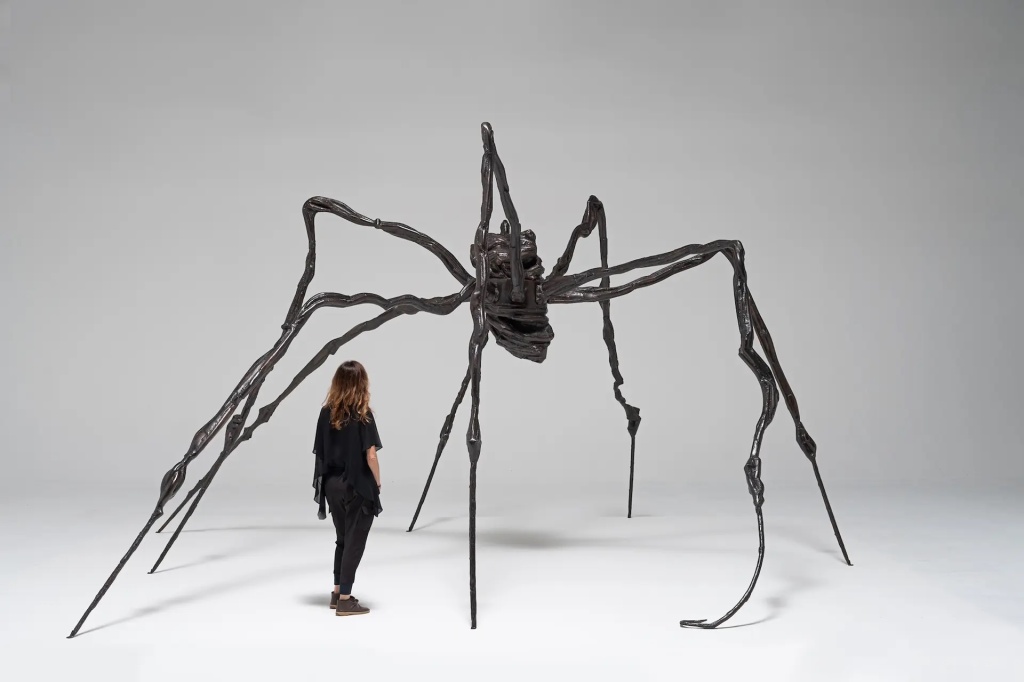One of Louise Bourgeois’ famed “Spider” sculptures will be up for grabs next month when it hits the auction block in Sotheby’s New York with a potentially record-breaking price tag.
The work, titled Spider (1996), is expected to fetch between $30 million and $40 million. Even if the work achieves the low estimate, it would mint a new auction record for Bourgeois, whose current benchmark stands at $28 million (without fees). That record was set by another Spider (1996) at Christie’s in May 2019.
And if the work sells at or above its high estimate, it could become the most expensive work by a woman ever sold at auction. The holder of that record is Georgia O’Keeffe’s painting Jimson Weed (1936), bought by Walmart heiress Alice Walton for $44.4 million (without fees) in 2014.
Per Sotheby’s, Spider comes from the collection of Fundação Itaú, the philanthropic wing of Brazilian bank Itaú Unibanco. It debuted in 1996 Bienal de São Paulo and was subsequently acquired by Olavo Setubal, a collector and cofounder of the bank.
Like each entry in the world-famous series, it is a mammoth creation at ten-foot-tall and 18-feet wide. Its spindly, reaching legs may be nightmare fodder for arachnophobes, but according to Bourgeois, the spiders are stand-ins for sensitive subjects, in particular motherhood.
“The spider—why the spider? Because my best friend was my mother and she was deliberate, clever, patient, soothing, reasonable, dainty, subtle, indispensable, neat, and as useful as a spider,” the artist once said.
Bourgeois’s spiders are on view in public spaces worldwide and have been acquired by leading cultural institutions, including Guggenheim Museum in Bilbao, the Dia Art Foundation in New York, the National Gallery of Canada in Ottawa, and Tate Modern in London.
“The Spider has become a global icon, recognizable by all given its prominent presence in cultural institutions around the world,” David Galperin, Sotheby’s head of contemporary art in New York, said in a statement. “It is not only a paragon of modern sculpture but has taken on a larger symbolic presence within contemporary culture internationally.”



